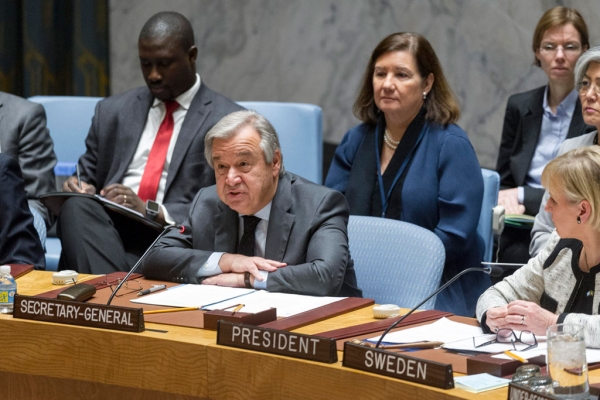The annual report was submitted to the Security Council on the 6th of May. The Secretary-General defined the COVID-19 pandemic as ‘the greatest test that the world has faced since the establishment of the United Nations’, further exacerbating ‘the vulnerability of the least protected in society’. In light of this unprecedented crisis, the Secretary-General has also reaffirmed his call for an immediate global ceasefire as a necessary measure to bring assistance and hope to those in need.
According to the report, 2019 has been a year marked by widespread civilian death, injury and suffering. The population of Afghanistan has paid the highest price, with over 10,000 recorded civilian casualties, of whom 42 per cent is constituted by women and children. 2019 also marks the ninth consecutive year in which over 90 percent of the casualties arising by the use of explosive weapons are civilians. This shows the widespread resort by parties to conflict to attacks on civilian objects and infrastructures. Between others, the report mentions the devastating July 2019 air strike that took place on Tajoura’s immigration detention facility, in Libya. Furthermore, the number of enforced disappearances and missing persons continue to be alarming. The 139,000 tracing requests that were being handled by the end of 2019 the International Committee of the Red Cross speak for itself.
Conflict-related sexual violence remains consistently perpetrated in many armed conflicts. It is used by armed groups as a tool of retaliation, and in the context of detention, displacement and migration. Women and girls continue to be the primary category of victims. The report has also highlighted significant challenges for what concerns the prevention of sexual exploitation and abuse in the context of UN operations.
Conflicts continue to have a devastating impact on children, disproportionately affected by forced recruitment, displacement, separation from their caretakers and the impossibility to access basic resources. Schools are often used for military purposes, and are attacked as a consequence. The Report highlighted the concerning conditions of the thousands of children of the ‘Caliphate’ in Iraq, and remarked that they are to be treated first and foremost as victims. Persons with disabilities and the elderly remain also significantly impacted by the consequences of armed conflicts.
The violence against journalists and humanitarian actors remains rampant. The result is a generalized lack of access to areas affected by conflict, that severely constrains independent reporting, and the provision of essential care to the affected populations. Healthcare facilities and personnel, for example, were affected by over 1,000 security incidents.
Armed conflicts remain the main driver of hunger. In 2019, more than 57 per cent of those facing acute hunger globally lived in countries or territories that are affected by conflicts or instability. A positive development in this context was the adoption of an amendment by the Assembly of State Parties to the Rome Statute of the International Criminal Court that extends the Court’s jurisdiction over the war crime of intentional use of starvation of civilians as a method of warfare to non-international armed conflicts.
The main risks in the context of the protection of civilians for the new decade are another important issue addressed in the report. The rise of urbanization and population density worldwide indicate that urban warfare will remain a prominent feature of conflicts, and that consequently the number of civilians at risk of indiscriminate harm will increase. The proliferation and development of new weapon technologies, such as armed drones and lethal autonomous weapons systems, are other developments that demand urgent action. Furthermore, the report remarks that the malicious use of digital technologies (through the promotion of hatred, violence and misinformation), and cyberattacks on critical infrastructure can cause significant harm to civilians. The impact of climate change is another important issue mentioned in the document: all of the world’s eight worst food crises are linked both to conflict and climate shocks.
In its conclusion, the report identifies the most pressing challenges to strengthen the protection of civilians: the lack of respect for the law, and insufficient accountability for serious violations of international human rights law and international humanitarian law. The Secretary-General underlined that the most effective way to protect civilians is the prevention of the ‘outbreak, escalation, continuation and recurrence of armed conflict.’ He remarked that when that is not possible, the tools to strengthen the protection of civilians ‘already exist and are available. What is needed more than ever is the political will and commitment to prioritize protection of civilians in order to ensure that it becomes a tangible reality for those affected by armed conflict, today and in the future.’ Guterres also urged parties to conflict to respond to his call for a global ceasefire to facilitate the efforts necessary to address the COVID-19 pandemic.
To know more, please read:
https://undocs.org/en/S/2020/366
Author: Philippe H. M. Leroy Beaulieu




